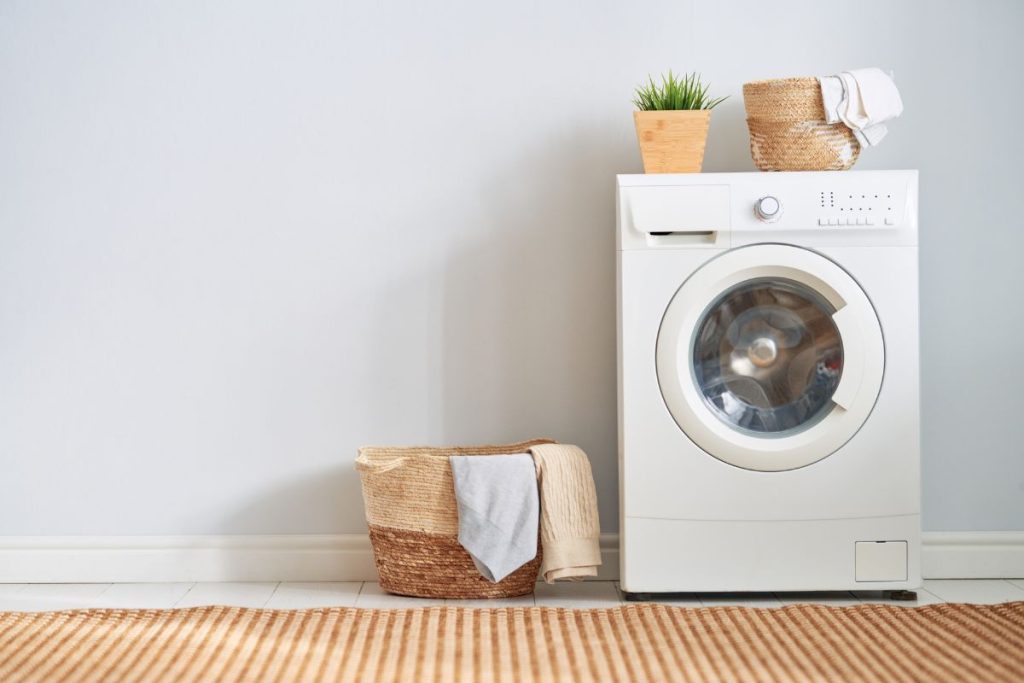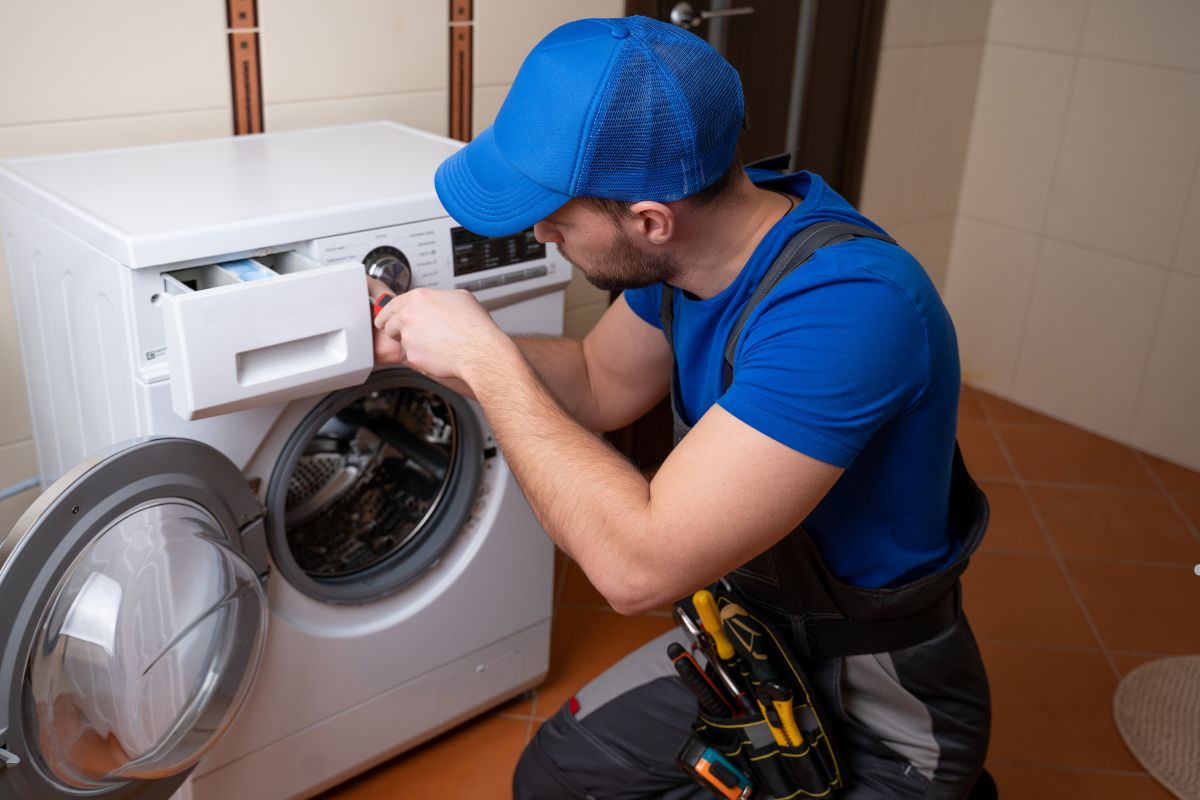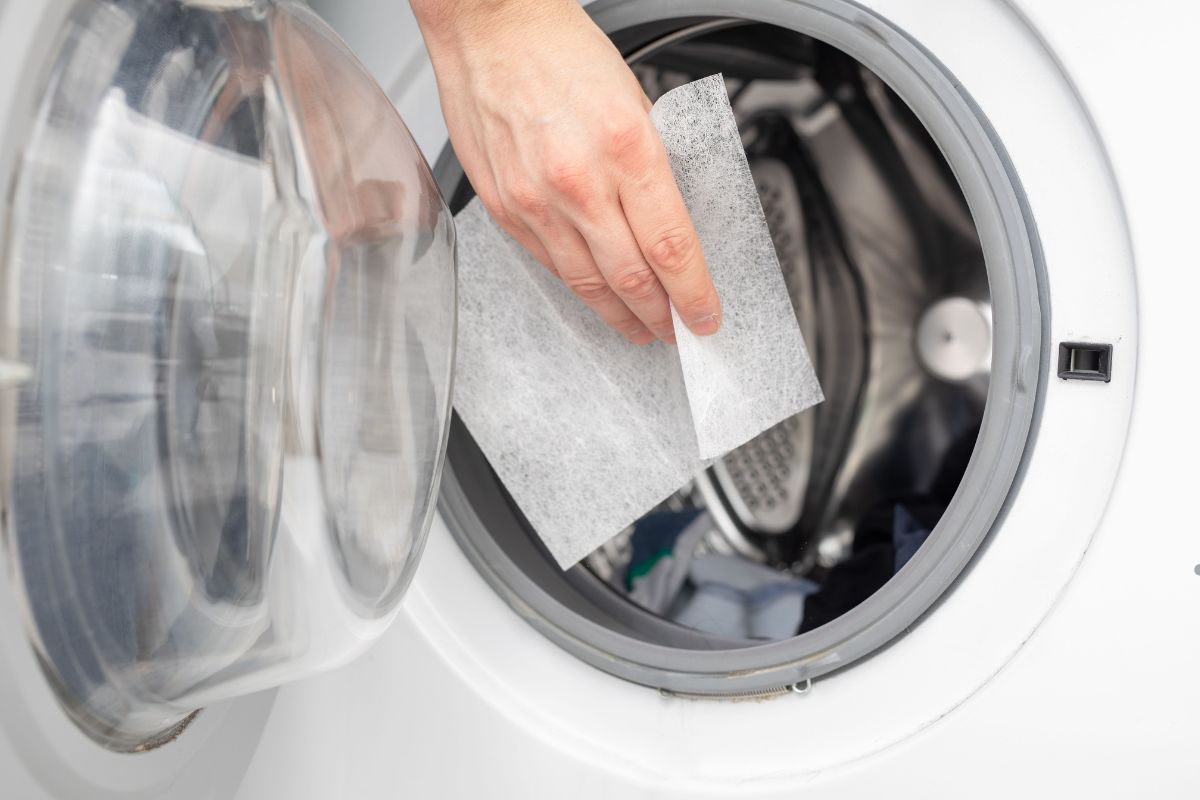
Is your washing machine harboring a hidden world of mold and mildew, leaving your clothes smelling less than fresh? The good news is, you can tackle this problem head-on! This comprehensive guide will walk you through the process of cleaning mold from both front-load and top-load washing machines, providing step-by-step instructions and preventative measures to keep your laundry appliance clean and odor-free. A clean washing machine means cleaner, fresher clothes. Let’s get started!
Why is My Washing Machine Moldy?
High-efficiency (HE) washing machines are designed to minimize water usage, making them an excellent choice for conservation. However, this reduced water flow can create the perfect conditions for mold and mildew to thrive. The combination of moisture, leftover detergent, and fabric softener residue fosters bacterial growth, especially in front-load washers, where the rubber gasket traps excess dampness. Without proper ventilation after each use, the issue can worsen over time. To keep your washer fresh and mold-free, it’s crucial to address these factors proactively. Our professional cleaning service ensures a deep, thorough clean, eliminating mold buildup and keeping your appliance in top condition. Contact us today to schedule your service!
Gathering Your Supplies

Before you begin the cleaning process, gather the necessary supplies. This will make the task more efficient and ensure you have everything you need at your fingertips. Here’s a list of essentials:
- White Vinegar: A natural disinfectant and deodorizer.
- Baking Soda: Helps to scrub away mold and absorb odors.
- Bleach (Optional): For stubborn mold or particularly dirty machines. Use with caution and always follow the manufacturer’s instructions.
- Spray Bottle: For applying cleaning solutions.
- Rubber Gloves: To protect your hands.
- Cleaning Cloths or Sponges: For wiping surfaces.
- Old Toothbrush or Small Brush: For scrubbing tight spaces, like the detergent dispenser.
- Screwdriver (Optional): To remove the detergent dispenser for thorough cleaning (check your machine’s manual).
Cleaning a Front Load Washing Machine
Front-load washing machines are efficient, but they often develop mold, especially around the rubber gasket. Constant moisture, detergent buildup, and poor ventilation create the perfect environment for mold growth, leading to unpleasant odors and potential health risks.
To clean mold effectively, start by wiping the gasket with a mold cleaner or a mix of vinegar and baking soda, scrubbing deep into the folds. Then, run a hot water cycle with a washing machine cleaner to remove lingering mold and bacteria.
Prevent future buildup by leaving the washer door open after each use, wiping the gasket regularly, and using the right amount of detergent. If mold persists, then professional mold cleaning service to restore your washer’s freshness!
Cleaning the Gasket/Rubber Seal
This is the most crucial step. Gently pull back the rubber gasket and inspect for mold.
- Prepare a Cleaning Solution: Mix equal parts white vinegar and water in a spray bottle.
- Spray and Soak: Generously spray the gasket with the vinegar solution, ensuring you get into all the crevices. Let it sit for at least 30 minutes.
- Scrub Thoroughly: Using a cleaning cloth or sponge, scrub the gasket to remove mold and mildew. An old toothbrush is helpful for hard-to-reach areas.
- Wipe Clean: Wipe the gasket clean with a damp cloth.
- Repeat if Necessary: If the mold is particularly stubborn, repeat the process.
- Dry Completely: After cleaning, thoroughly dry the gasket with a clean cloth.
One of the most crucial steps in preventing mold buildup in your front-load washer is cleaning the rubber gasket. Start by gently pulling back the gasket to inspect for hidden mold. Prepare a cleaning solution by mixing equal parts white vinegar and water in a spray bottle. Generously spray the gasket, ensuring the solution reaches deep into the crevices, and let it sit for at least 30 minutes.
Next, scrub thoroughly with a cloth, sponge, or an old toothbrush to remove stubborn mold and mildew. Wipe it clean with a damp cloth and repeat the process if needed. Once the mold is gone, make sure to dry the gasket completely to prevent future growth.
For a hassle-free and professional mold removal service, call us today! We’ll ensure your washer stays clean, fresh, and mold-free.
Cleaning the Drum
- Empty the Washer: Ensure the washing machine is empty.
- Prepare a Cleaning Solution: Pour 1 cup of white vinegar into the detergent dispenser.
- Run a Cleaning Cycle: Run an empty, hot water cycle with the vinegar. If your machine has a “clean washer” cycle, use that. Otherwise, select the hottest, longest cycle.
- Optional: Baking Soda Boost: For extra cleaning power, add 1/2 cup of baking soda directly to the drum along with the vinegar.
Cleaning the Detergent Dispenser
The detergent dispenser is another area where mold can thrive.
- Remove the Dispenser: If possible, remove the detergent dispenser from the washing machine (check your manual for instructions).
- Soak and Scrub: Soak the dispenser in a solution of warm water and white vinegar. Scrub away any mold or residue with a small brush.
- Rinse Thoroughly: Rinse the dispenser thoroughly with clean water.
- Dry Completely: Ensure the dispenser is completely dry before reinserting it into the washing machine.
- Clean the Compartment: Wipe down the detergent dispenser compartment inside the washing machine with a damp cloth.
Cleaning a Top Load Washing Machine
Cleaning a top-load washing machine is generally simpler than cleaning a front-load machine, but it’s still important to do it regularly.
Cleaning the Drum
- Empty the Washer: Ensure the washing machine is empty.
- Fill with Hot Water: Fill the washing machine with hot water.
- Add Cleaning Agents: Add 2 cups of white vinegar and 1/2 cup of baking soda to the water.
- Run a Cycle: Let the mixture agitate for a few minutes, then stop the cycle and let it sit for at least 30 minutes to an hour. This allows the vinegar and baking soda to work their magic.
- Complete the Cycle: After soaking, resume the wash cycle and let it complete.
Cleaning the Detergent Dispenser

The process for cleaning the detergent dispenser in a top-load machine is similar to that of a front-load machine.
- Remove the Dispenser: If possible, remove the detergent dispenser from the washing machine (check your manual for instructions).
- Soak and Scrub: Soak the dispenser in a solution of warm water and white vinegar. Scrub away any mold or residue with a small brush.
- Rinse Thoroughly: Rinse the dispenser thoroughly with clean water.
- Dry Completely: Ensure the dispenser is completely dry before reinserting it into the washing machine.
- Clean the Compartment: Wipe down the detergent dispenser compartment inside the washing machine with a damp cloth.
Preventing Future Mold Growth
Prevention is key to keeping your washing machine mold-free. Here are some essential tips:
Proper Ventilation
- Leave the Door Ajar: After each wash cycle, leave the washing machine door ajar to allow air to circulate and dry out the interior.
- Wipe Down Surfaces: Wipe down the gasket (in front-load machines) and the drum with a clean, dry cloth after each use.
Using the Right Amount of Detergent
- Don’t Overdo It: Using too much detergent can leave residue that contributes to mold growth. Follow the detergent manufacturer’s recommendations and use the appropriate amount for each load.
- Consider HE Detergent: If you have an HE washing machine, use only HE detergent, as it’s formulated to produce less suds.
Regular Cleaning
- Monthly Cleaning: Clean your washing machine at least once a month using the methods described above.
- Run Hot Water Cycles: Periodically run hot water cycles with vinegar or a commercial washing machine cleaner to help prevent mold buildup.
Wiping Down the Washer After Use
- Dry Gasket & Door: A quick and simple step like drying the rubber gasket in front-load washers can significantly reduce mold growth. Make it a habit to wipe away excess moisture after each use to keep your machine fresh and clean. For a thorough deep cleaning, call us today and let our experts take care of it!
Frequently Asked Questions (FAQs)
Is mold in my washing machine dangerous?
Yes, mold in your washing machine can be dangerous. Mold spores can become airborne and cause respiratory problems, allergies, and other health issues, especially for people with asthma or weakened immune systems.
How often should I clean my washing machine?
You should clean your washing machine at least once a month to prevent mold growth. If you notice a musty odor or visible mold, clean it immediately.
Can I use bleach in my HE washing machine?
Yes, you can use bleach in some HE washing machines, but it’s important to check your machine’s manual first. Some manufacturers recommend against using bleach, as it can damage certain components. If you do use bleach, dilute it properly and follow the manufacturer’s instructions.
What if the mold is really stubborn?
For stubborn mold, you may need to repeat the cleaning process several times. You can also try using a stronger cleaning solution, such as a commercial mold remover, but be sure to follow the product’s instructions carefully and test it in an inconspicuous area first. If the mold persists, you may need to consult a professional cleaning service.
Maintaining a Mold-Free Washing Machine
Keeping your washing machine free from mold is crucial for a healthy home and fresh, clean laundry. By following the steps in this guide and adopting preventive measures, you can effectively prevent mold buildup and extend the life of your appliance. Regular maintenance is the key to long-term cleanliness! If you need a professional deep cleaning, contact us today for expert service and a fresher laundry experience.
